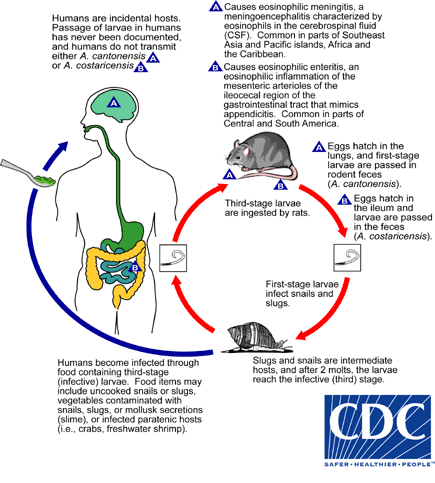The number of rat lungworm, or Angiostrongyliasis infections in Hawaii has now risen to 14, according to an AP report Friday. The latest confirmed case is one of the adults who drank kava and had been previously reported as a highly probable case in April.

Cases of the potentially serious parasitic infection have been reported both on Big Island and on Maui. In 2016, there were 11 reported confirmed cases, all on Hawaii Island.
Some of the cases have been linked to drinking homemade kava which they had left out in uncovered buckets after preparing the drink at the home. Health officials investigation determined the source of the infections was likely the homemade kava tainted by slugs.
The Hawaii Department of Health advises everyone to carefully store, inspect and wash produce, especially leafy greens. Always store food in covered containers, wash all produce thoroughly and supervise young children playing outdoors to prevent them from putting snails or slugs into their mouths. Controlling snail, slug, and rat populations is one of the most important steps in fighting the spread of rat lungworm disease. Take precautions to control slugs, snails, and rats around properties, and especially around home gardens. Farmers as well as food handlers and processors should increase diligence in controlling slugs, snails, and rats on the farm.
The most common symptoms of angiostrongyliasis or rat lungworm include severe headache and neck stiffness, but symptoms may vary widely among cases. Seek medical attention for headache, fever, stiff neck, tingling or painful feelings in the skin or extremities. The most serious cases experience neurological problems, pain and severe disability.
Related:
- Measles outbreak grows by a dozen cases during past week
- First molecular diagnostics for insecticide resistance in sandflies
- Scotland: Lanarkshire hepatitis A outbreak now 42 cases
- Dallas County mumps tally now 88
- Living Donor & Kidney Transplant Recipient Form Lasting Bond Through the Transplant Institute of Florida at Largo Medical Center
- Mesa County reports tularemia case in dead rabbit
- Wisconsin ranked ‘Best state for Nurses’
- Mexico: H7N3 avian influenza reported on Jalisco farm
- Dengue fever: Peru reports 6000 confirmed cases, northern coast most affected

